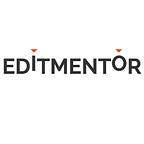How to Test an Editing Student’s Skill Mastery
This question, found in a Facebook film teacher’s group, is common. How can a teacher with 30 unique students per class, 4X times a day (120 students total) possibly check that each one gained knowledge in film class?
At EditMentor, we’ve been thinking about this problem for a long time.
Large class sizes lead to group projects, which are needed in film classes because filmmaking is in fact a group activity. But group projects make it difficult for teachers to assess individual skills. There is no lack of technology in the classroom or commitment from a teacher in the picture below. However, these students will inevitably specialize in skill, gaining confidence in one area of filmmaking while being intimidated by another skill that they may never attempt to learn. Editing is almost always in the intimidation category and avoided by students, yet it is the core literacy required to make all visual stories.
We built EditMentor to solve that problem. Below is an example lesson of how we teach understanding different film shots.
Benefits of EditMentor
- Interactive film curriculum, designed by leading educators
- Teacher dashboard to measure student scores on challenge exercises
- Works on any computer with Google Chrome, including Chromebooks (but not mobile)
Shot Coverage 01
Note: The full Shot Coverage 01 lesson is made up of 11 challenges.
Shot Coverage 02 has 12 more.
View our curriculum roadmap.
Lesson Description — In this lesson, you will learn to identify the basic camera angles (also known as SHOTS) that directors and cinematographers use in production.
All of the shots filmed for a scene or movie are collectively called COVERAGE. When covering a scene, a director will film the same moment over and over again from several different camera angles. The reason directors do that is to get the best acting performance and camera work possible.
When the footage is sent to the editorial department, editors choose the best shots, takes and camera angles for each scene.
1. Shot Types — When filming a scene, directors rely on three basic shot sizes to convey different information to the audience.
WIDE SHOT (WS): establishes the location of the scene and shows where all of the characters are located within the scene.
MEDIUM SHOT (MS) generally shows the character from the waist up. MS place equal weight on a character and their surroundings.
CLOSE-UP (CU) generally focuses on on a character’s face so the audience can see expressions clearly. CU reveal the reaction of a character to an emotional event.
After defining the shots, we ask the students to answer questions about certain shots in the timeline using our interactive marker challenges.
2. Shot Composition and Framing — Next, students learn about shot composition, meaning the make up of the items in the frame beyond the shot’s size.
Students identifying POVs, insert shots, cutaways and two-shots by placing a marker on them in the timelines of completed scenes.
Student Review — Some of these questions get a little tricky, so students will always want to check their work. In EditMentor, students can press the “view all answers” button to see what answers they got right and wrong.
Teacher’s Dashboard — Now the best part. Teachers can log into their account page and view the scores of the whole class. You’ll learn if a few students didn’t understand the material, or the entire room.
Think back to that classroom we showed you earlier. How could the teacher in that class (it was me) possibly know which students understood the material? I couldn’t.
